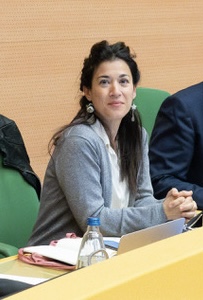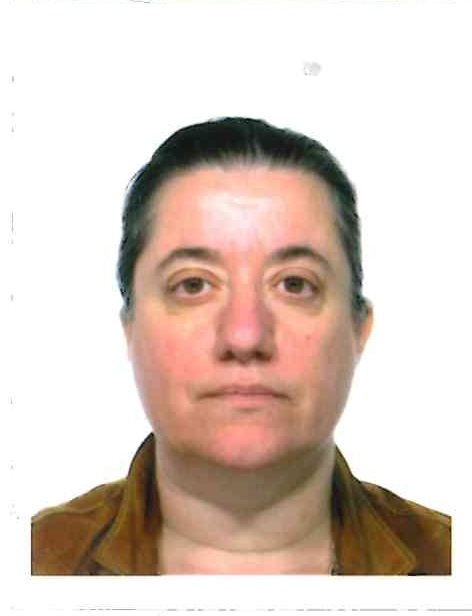Studiare
In questa sezione è possibile reperire le informazioni riguardanti l'organizzazione pratica del corso, lo svolgimento delle attività didattiche, le opportunità formative e i contatti utili durante tutto il percorso di studi, fino al conseguimento del titolo finale.
Calendario accademico
Il calendario accademico riporta le scadenze, gli adempimenti e i periodi rilevanti per la componente studentesca, personale docente e personale dell'Università. Sono inoltre indicate le festività e le chiusure ufficiali dell'Ateneo.
L’anno accademico inizia il 1° ottobre e termina il 30 settembre dell'anno successivo.
Calendario didattico
Il calendario didattico indica i periodi di svolgimento delle attività formative, di sessioni d'esami, di laurea e di chiusura per le festività.
| Periodo | Dal | Al |
|---|---|---|
| 1° periodo lezioni (1A) | 16-set-2024 | 30-ott-2024 |
| 1° periodo lezioni (1B) | 7-nov-2024 | 17-dic-2024 |
| 2° periodo lezioni (2A) | 12-feb-2025 | 25-mar-2025 |
| 2° periodo lezioni (2B) | 4-apr-2025 | 24-mag-2025 |
| Sessione | Dal | Al |
|---|---|---|
| Prove parziali 9/12 CFU - Prove finali 6 CFU del periodo 1A | 31-ott-2024 | 6-nov-2024 |
| 1° appello invernale - dicembre 2024 | 18-dic-2024 | 23-dic-2024 |
| Sessione invernale - 2 appelli | 8-gen-2025 | 10-feb-2025 |
| Prove parziali 9/12 CFU - Prove finali 6 CFU del periodo 2A | 29-mar-2025 | 3-apr-2025 |
| Appello riservato a studenti fuori corso | 29-mar-2025 | 3-apr-2025 |
| Sessione estiva - 3 appelli | 26-mag-2025 | 26-lug-2025 |
| Sessione autunnale - 1 appello | 25-ago-2025 | 13-set-2025 |
| Sessione | Dal | Al |
|---|---|---|
| Sessione autunnale - ottobre 2024 | 17-ott-2024 | 19-ott-2024 |
| Sessione invernale - febbraio 2025 | 11-feb-2025 | 11-feb-2025 |
| Sessione invernale - marzo 2025 | 26-mar-2025 | 28-mar-2025 |
| Sessione estiva - luglio 2025 | 10-lug-2025 | 12-lug-2025 |
| Periodo | Dal | Al |
|---|---|---|
| Festa di Ognissanti | 1-nov-2024 | 1-nov-2024 |
| Festa dell'Immacolata | 8-dic-2024 | 8-dic-2024 |
| Vacanze di Natale | 24-dic-2024 | 6-gen-2025 |
| Vacanze di Pasqua | 18-apr-2025 | 22-apr-2025 |
| Festa della Liberazione | 25-apr-2025 | 25-apr-2025 |
| Festa del Lavoro | 1-mag-2025 | 1-mag-2025 |
| Festa del Santo Patrono | 21-mag-2025 | 21-mag-2025 |
| Festa della Repubblica | 2-giu-2025 | 2-giu-2025 |
| Vacanze estive | 11-ago-2025 | 16-ago-2025 |
Calendario esami
Gli appelli d'esame sono gestiti dalla Unità Operativa Segreteria Corsi di Studio Giurisprudenza.
Per consultazione e iscrizione agli appelli d'esame visita il sistema ESSE3.
Per problemi inerenti allo smarrimento della password di accesso ai servizi on-line si prega di rivolgersi al supporto informatico della Scuola o al servizio recupero credenziali
Docenti
 bernardo.calabrese@univr.it
bernardo.calabrese@univr.it
 roberto.flor@univr.it
roberto.flor@univr.it
 stefano.gatti@univr.it
stefano.gatti@univr.it
 mariafederica.merotto@univr.it
mariafederica.merotto@univr.it
 rosamaria.vadala@univr.it
rosamaria.vadala@univr.it
 isabella.zambotto@univr.it
isabella.zambotto@univr.it
Piano Didattico
Il piano didattico è l'elenco degli insegnamenti e delle altre attività formative che devono essere sostenute nel corso della propria carriera universitaria.
Selezionare il piano didattico in base all'anno accademico di iscrizione.
1° Anno
| Insegnamenti | Crediti | TAF | SSD |
|---|
Diritto costituzionale
Filosofia del diritto
Istituzioni di diritto privato
Istituzioni di diritto romano
Storia del diritto medievale e moderno
2° Anno Sarà attivato nell'A.A. 2025/2026
| Insegnamenti | Crediti | TAF | SSD |
|---|
Un insegnamento a scelta3° Anno Sarà attivato nell'A.A. 2026/2027
| Insegnamenti | Crediti | TAF | SSD |
|---|
4° Anno Sarà attivato nell'A.A. 2027/2028
| Insegnamenti | Crediti | TAF | SSD |
|---|
Un insegnamento a scelta5° Anno Sarà attivato nell'A.A. 2028/2029
| Insegnamenti | Crediti | TAF | SSD |
|---|
Un insegnamento a scelta| Insegnamenti | Crediti | TAF | SSD |
|---|
Diritto costituzionale
Filosofia del diritto
Istituzioni di diritto privato
Istituzioni di diritto romano
Storia del diritto medievale e moderno
| Insegnamenti | Crediti | TAF | SSD |
|---|
Un insegnamento a scelta| Insegnamenti | Crediti | TAF | SSD |
|---|
| Insegnamenti | Crediti | TAF | SSD |
|---|
Un insegnamento a scelta| Insegnamenti | Crediti | TAF | SSD |
|---|
Un insegnamento a scelta| Insegnamenti | Crediti | TAF | SSD |
|---|
5 insegnamenti tra il 3,4 e 5 anno (1 insegnamento al 3 anno, 1 insegnamento al 4 anno e 3 insegnamenti al 5 anno)Legenda | Tipo Attività Formativa (TAF)
TAF (Tipologia Attività Formativa) Tutti gli insegnamenti e le attività sono classificate in diversi tipi di attività formativa, indicati da una lettera.
Istituzioni di diritto romano [Matricole pari] (2024/2025)
Codice insegnamento
4S00317
Docente
Coordinatore
Crediti
9
Lingua di erogazione
Italiano
Settore Scientifico Disciplinare (SSD)
IUS/18 - DIRITTO ROMANO E DIRITTI DELL'ANTICHITÀ
Periodo
2° periodo lezioni (2A), 2° periodo lezioni (2B)
Corsi Singoli
Autorizzato
Obiettivi di apprendimento
Il corso mira a evidenziare – con riferimento ai singoli istituti trattati – le origini e l’evoluzione storica delle strutture di pensiero rimaste tutt’oggi a fondamento del diritto privato europeo. Una particolare attenzione verrà prestata al processo civile romano, nelle sue varie forme. Al termine del corso lo studente avrà acquisito una conoscenza di base delle categorie e del linguaggio del diritto privato romano.
Prerequisiti e nozioni di base
Nessuno.
Programma
Programma
Parte generale
- Introduzione metodologica: concetti generali della giusromanistica.
- Le fonti di produzione e le fonti di cognizione del diritto romano.
- Il processo civile.
- Le persone e la famiglia.
- Fatto, atto e negozio giuridico.
- Le obbligazioni e i contratti.
- I diritti reali.
- Le donazioni.
- Le successioni mortis causa.
Ferma la necessità dello studio integrale di uno dei tre testi di parte generale indicati in bibliografia, si precisa che per la parte sulle fonti di produzione e di cognizione del diritto romano è consigliato lo studio sul volume di Burdese indicato in bibliografia (pagg. 1-72).
Parte speciale
Lo studente/la studentessa potrà scegliere tra i due seguenti percorsi formativi all’interno del volume di Garofalo di parte speciale in Bibliografia:
- percorso privatistico: due saggi a scelta tra II, III, IV, V;
- percorso storico-culturale: due saggi a scelta tra I, VI, VII, VIII.
Ogni studente/studentessa è tenuto/a a studiare il programma di parte speciale previsto per il proprio a.a. di frequenza, con possibilità – a propria libera scelta – di optare per il programma dell’a.a. in corso.
Gli studenti/le studentesse che volessero cimentarsi nello studio di parti di programma su testi istituzionali di diritto romano in lingua tedesca, francese o inglese possono prendere contatto con il docente nel corso delle lezioni.
Gli studenti/le studentesse ERASMUS sono pregati di prendere contatto con il docente all’inizio del corso per concordare il programma e le modalità della prova d’esame.
Lezioni in presenza (9 CFU, 54 ore):
- Le fonti di produzione e le fonti di cognizione del diritto romano.
- Il processo civile.
- Le persone e la famiglia.
- Fatto, atto e negozio giuridico.
- Le obbligazioni e i contratti.
- I diritti reali.
- Le donazioni.
- Le successioni mortis causa.
Bibliografia
Modalità didattiche
Modalità didattiche.
Considerato che l’obiettivo del corso è quello di fornire una preparazione di carattere istituzionale, il metodo di insegnamento si propone di favorire l’apprendimento mediante lezioni frontali che espongano gli istituti tenendo conto della loro inscindibile correlazione logica e sistematica.
Coerentemente con i risultati di apprendimento attesi, non verrà trascurato l’approccio ad alcuni casi pratici come momenti conclusivi dell’analisi. A tal proposito, si segnala il corso di preparazione alla ‘Moot Court Competition. Diritto romano e tradizione civilistica’: si tratta di un’attività didattica integrativa sorta nell’ambito del progetto ‘Laboratorio Romanistico Gardesano’, istituito con la Convenzione siglata nel 2015 tra le Università di Verona, Brescia, Trento e Milano ‘Statale’, volta anzitutto alla selezione della squadra di studenti/studentesse veronesi chiamati a partecipare alla competizione processuale (tenuta ogni anno nel mese di giugno a Palazzo Feltrinelli – Gargnano, BS), ma aperta a tutti/tutte gli studenti/le studentesse interessati e consigliata agli iscritti al corso di Istituzioni di diritto romano proprio al fine di potenziare le capacità di applicare il ragionamento giuridico al caso concreto. L’insegnamento offre altresì una forma sperimentale di didattica collaborativa che permette agli studenti/alle studentesse che vi aderiscano volontariamente, organizzati in gruppi di lavoro e mediante la presentazione di case-studies nell’ultima settimana del corso, di ottenere un punteggio bonus premiale fino a due trentesimi in aggiunta al voto ottenuto in sede di colloquio orale. Maggiori informazioni verranno fornite dal docente.
Eventuali convegni e/o seminari di particolare rilevanza per i temi trattati, attività di tutorato e di laboratorio opzionali relative al corso saranno segnalati di volta in volta dal docente durante le lezioni.
Le videoregistrazioni delle lezioni del corso verranno messe a disposizione esclusivamente delle seguenti categorie:
- studenti e studentesse con disabilità, invalidità o DSA, previa comunicazione al docente da parte dell’UO Inclusione e Accessibilità;
- studenti e studentesse partecipanti al progetto di formazione PA 110 e lode;
- studenti e studentesse che presentino certificazione di positività al covid; in caso di positività al covid le lezioni saranno rese disponibili limitatamente al periodo di positività.
Modalità di verifica dell'apprendimento
Modalità di verifica dell’apprendimento.
Obiettivi delle prove di accertamento.
Accertamento della conoscenza degli istituti sostanziali e processuali del diritto romano.
Contenuti e modalità di svolgimento delle prove di accertamento.
Il corso si conclude con un esame strutturato in due prove obbligatorie per tutti gli studenti/le studentesse (senza distinzione tra frequentanti e non frequentanti), l’una scritta e l’altra orale.
La prova scritta verte sugli argomenti della parte generale, con sottoposizione di cinque domande aperte cui lo studente/la studentessa deve rispondere nel tempo massimo complessivo di trenta minuti.
Nel colloquio orale, dopo succinta illustrazione e commento dell’elaborato scritto, sarà ulteriormente vagliata la conoscenza sia della parte generale sia di quella speciale. Nelle prime ore del corso, si illustreranno nel dettaglio le modalità e le tipologie della prova d’esame.
Come previsto dal regolamento di facoltà, al termine del 1° periodo di lezioni (2A) è prevista una prova intermedia sugli argomenti trattati durante il corso. La data della stessa sarà comunicata durante le lezioni. Qualora l'esito della prova sia positivo, allo studente/alla studentessa verrà assegnata una votazione in trentesimi e sarà esonerato dal rispondere, nell'esame scritto finale, alle domande relative ai temi oggetto di superamento nella prova intermedia. Il voto assegnato sarà considerato valido per il solo anno accademico in cui la prova intermedia è stata sostenuta.
La valutazione finale è stabilita in relazione all’esito della prova scritta e del colloquio conclusivo, nonché del voto del parziale eventualmente superato dallo studente/alla studentessa alla fine del periodo 2A.
Per gli studenti/le studentesse ERASMUS, la prova d’esame consisterà – a discrezione dello studente/della studentessa e previo accordo con il docente – in un colloquio orale oppure in un elaborato scritto, in italiano o in inglese, avente ad oggetto la parte di programma previamente concordata con il docente.
Criteri di valutazione
La valutazione finale è espressa in trentesimi. L’attribuzione della lode è legata alla seguente valutazione della prova d'esame: autonomia completa dello studente/della studentessa, controllo completo della disciplina, capacità critica e argomentativa particolarmente apprezzabile dello studente/della studentessa.
Nella valutazione della capacità critica sarà tenuto in considerazione anche lo studio della parte speciale.
Criteri di composizione del voto finale
La valutazione tra il 18 e il 20 corrisponde a una conoscenza sufficiente, ancorché minima e non approfondita, della materia; la valutazione tra il 20 e il 25 evidenzia una conoscenza più che sufficiente/discreta dei contenuti; la valutazione tra il 25 e il 29 mette in luce una buona/molto buona conoscenza delle strutture della materia e una capacità critica dello studente/della studentessa. La valutazione tra il 30 e il 30 e lode corrisponde a una ottima/eccellente conoscenza della materia accompagnata da una ottima/eccellente capacità critica, di analisi, di connessione. Nella valutazione della capacità critica sarà tenuto in considerazione anche lo studio della parte speciale.
Lingua dell'esame
Italiano
Tipologia di Attività formativa D e F
| anni | Insegnamenti | TAF | Docente |
|---|---|---|---|
| 4° 5° | Diritto agrario per lo sviluppo e l'innovazione | D |
Leonardo Fabio Pastorino
(Coordinatore)
|
| 4° 5° | Diritto bancario e dei mercati finanziari | D |
Matteo Ortino
(Coordinatore)
|
| 4° 5° | Processi aziendali e modelli di prevenzione | D |
Paolo Roffia
(Coordinatore)
|
| 4° 5° | Protezione sociale | D |
Sylvain Giovanni Nadalet
(Coordinatore)
|
| anni | Insegnamenti | TAF | Docente |
|---|---|---|---|
| 4° 5° | Diritto delle operazioni societarie | D |
Paolo Butturini
(Coordinatore)
|
| 4° 5° | Sociologia del diritto | D |
Carlo Lottieri
(Coordinatore)
|
| anni | Insegnamenti | TAF | Docente |
|---|---|---|---|
| 4° 5° | Diritto penale comparato | D |
Roberto Flor
(Coordinatore)
|
| 4° 5° | Medicina legale | D |
Francesco Ausania
|
| 4° 5° | Salute e sicurezza nel lavoro | D |
Marco Peruzzi
(Coordinatore)
|
Prospettive
Avvisi degli insegnamenti e del corso di studio
Per la comunità studentesca
Se sei già iscritta/o a un corso di studio, puoi consultare tutti gli avvisi relativi al tuo corso di studi nella tua area riservata MyUnivr.
In questo portale potrai visualizzare informazioni, risorse e servizi utili che riguardano la tua carriera universitaria (libretto online, gestione della carriera Esse3, corsi e-learning, email istituzionale, modulistica di segreteria, procedure amministrative, ecc.).
Entra in MyUnivr con le tue credenziali GIA: solo così potrai ricevere notifica di tutti gli avvisi dei tuoi docenti e della tua segreteria via mail e anche tramite l'app Univr.
Competenze linguistiche
Nei Piani didattici trovate la seguente indicazione:
“Conoscenza di una lingua straniera (inglese, francese, tedesco, spagnolo) - Certificazione CLA”
I CFU previsti sono 3 in TAF E.
I crediti formativi universitari possono essere acquisiti secondo le seguenti modalità:
I. Insegnamenti dedicati del CdS: Superamento dell’esame di uno degli insegnamenti di lingua straniera attivati nel CdS + registrazione CFU in presenza;
II. Certificazione CLA: livello minimo richiesto b1 (completo)
Procedura:
Studente - Iscrizione presso il Centro Linguistico di Ateneo (CLA) per sostenimento prove + superamento prove + iscrizione in apposita lista per registrazione crediti
Università - registrazione CFU (senza presenza)
III. Equipollenza di certificazioni linguistiche esterne: riconoscimento equipollenza di certificazioni linguistiche esterne (https://cla.univr.it/it/servizi/riconoscimento-delle-certificazioni-linguistiche-esterne)
I dettagli delle diverse procedure sono disponibili al link Competenze linguistiche - Giurisprudenza
Prova finale
Qualora lo studente abbia superato tutti gli esami previsti, il Corso di Studi si conclude con un esame di laurea, il quale consiste nella discussione di una tesi scritta, preparata dallo studente su un tema rientrante in una delle discipline del piano di studi seguito.
Il docente ufficiale assegna l’oggetto della tesi sei mesi prima della data di inizio della sessione in cui si sostiene l’esame di laurea. A tal fine lo studente deve depositare presso la competente struttura didattica, entro il termine predetto, apposito modulo, contenente l'indicazione del tema, sottoscritto dal docente.
Il Presidente del Collegio di Giurisprudenza nomina, almeno quindici giorni prima della discussione:
• un'apposita Commissione, composta di almeno sette componenti e presieduta dal Presidente del Collegio di Giurisprudenza, in sua assenza, dal Direttore del Dipartimento di Scienze Giuridiche o dal professore di ruolo di più alto grado accademico
• un correlatore della tesi, su proposta del relatore, secondo quanto previsto dal Regolamento didattico di Ateneo.
La Commissione formula un giudizio espresso in voti da 66 a 110/110mi. I punti disponibili per la valutazione della Commissione sono al massimo 10, che si aggiungono al punteggio risultante dalla media ponderata degli esami sostenuti approssimata per eccesso (l'arrotondamento al punto superiore si applica a partire dall'eccedenza da 0,50 rispetto al punto inferiore - es: 100,50=100; 100,51=101). I 10 punti disponibili sono attribuiti nel seguente modo:
1) da 0 ad 8 punti per il giudizio sulla tesi e sulla relativa discussione;
2) 1 punto per ciascuna delle seguenti note di merito, fino a un massimo di 2 punti, da aggiungersi al punteggio guadagnato sub 1), anche se inferiore a 8:
a) abbia discusso la tesi in corso (a tal fine, nel computo della durata del corso di studi non si tiene conto dell'eventuale periodo di permanenza all'estero nel quadro del programma Erasmus o di altri programmi di scambio equivalenti qualora lo studente abbia così conseguito i crediti previsti per il mantenimento della borsa di mobilità assegnata ovvero abbia effettuato all'estero, nell'ambito dei programmi predetti, ricerche per la tesi di laurea);
b) abbia elaborato e discusso la tesi in una delle seguenti lingue straniere: francese, inglese, spagnolo, tedesco;
c) abbia conseguito almeno 5 lodi nelle materie di base e caratterizzanti.
d) il relatore attesti che l'elaborato finale sia stato redatto in collegamento, per tema o metodo o dati utilizzati, ad un'attività di stage di almeno 6 CFU, inserita nel piano degli studi;
e) abbia partecipato al programma Erasmus, conseguendo i crediti previsti per il mantenimento della borsa di mobilità assegnata.
Lo studente ha diritto al riconoscimento di soli due punti, a prescindere dal fatto che si sia distinto per più note di merito.
Al candidato che ottiene il massimo punteggio (110/110mi) può, all'unanimità, essere attribuita la lode.
Nella redazione della tesi di laurea lo studente dovrà dimostrare, in relazione al tema assegnatogli, adeguata consapevolezza e padronanza della complessità giuridica. Per le tesi dedicate ai temi di diritto positivo il laureando dovrà dimostrare padronanza delle fonti del diritto, anche in relazione ai profili concernenti il dibattito dottrinale e giurisprudenziale. Nella redazione di tesi di ricerca dovrà inoltre dimostrare completezza di consultazione delle fonti e di conoscenza delle opinioni e degli orientamenti relativi al tema affrontato nonché un approccio critico alla materia, con eventuale esposizione di tesi o proposte caratterizzate da un minimo di originalità.
La discussione dell'elaborato sarà finalizzata a fare emergere tali caratteristiche.
Al link Sessioni di laurea - Giurisprudenza sono disponibili gli adempimenti amministrativi richiesti e la modulistica.
Tirocini e stage
Le attività di stage sono finalizzate a far acquisire allo studente una conoscenza diretta in settori di particolare attività per l’inserimento nel mondo del lavoro e per l’acquisizione di abilità specifiche di interesse professionale.
Le attività di stage sono svolte sotto la diretta responsabilità di un singolo docente presso studi professionali, enti della pubblica amministrazione, aziende accreditate dall’Ateneo veronese.
I crediti maturati in seguito ad attività di stage saranno attribuiti secondo quanto disposto nel dettaglio dal “Regolamento d’Ateneo per il riconoscimento dei crediti maturati negli stage universitari” vigente./p>
- Tutte le informazioni in merito agli stage per futuri studenti sono disponibili alla pagina Stage e tirocini.
- Tutte le informazioni in merito agli stage per studenti iscritti sono pubblicate in MyUnivr - come fare per - stage e tirocini.
- Tutte le informazioni in merito agli stage per le aziende sono disponili alla pagina Stage e tirocini per azienze.
Tutorato per gli studenti
Il servizio tutorato e' gestito da tutor selezionati dal Gruppo di Gestione AQ del Corso di Studio. Il Gruppo di Gestione AQ provvede, durante il corso dell'anno, a monitorare costantemente l'attivita' di tutorato.I tutor collaborano con il Gruppo di Gestione AQ nelle iniziative di presentazione dell'offerta formativa del Dipartimento di Scienze Giuridiche (Open Day). I tutor offrono supporto e consulenza agli studenti, in particolare del primo anno, oltre che negli orari di apertura dell'aula tutor anche via mail e telefono. Vengono fornite indicazioni riguardanti l'inserimento nella vita universitaria, la partecipazione alle attivita' formative, la gestione dello studio, pur senza entrare nel contenuto dei singoli insegnamenti.
E' istituita la figura del 'docente tutor' per ciascuno studente. I 'docenti tutor' sono individuati fra tutti i docenti componenti il Collegio di Giurisprudenza e afferenti al Dipartimento di Scienze Giuridiche.
Sono attivate le seguenti figure di 'docente tutor':
A) Docenti Tutor all'ingresso - Il docente tutor interviene, a richiesta dei singoli studenti affidatigli, concorrendo alla costruzione del loro percorso accademico nonche' a una piu' rapida familiarizzazione con l'ambiente universitario e con le specifiche modalita' di organizzazione dei tempi e dei metodi di studio che questo prevede;
B) Docenti Tutor per studenti fuori corso - La finalità specifica del tutorato e' di favorire il completamento del corso di studi e il conseguimento del relativo titolo di laurea; la competenza viene, a tal fine, affidata al Gruppo di Gestione AQ, che adotta i provvedimenti organizzativi necessari.
Progetto tesi
Per superare le eventuali difficoltà che si incontrano nella stesura dell’elaborato finale è stato elaborato un progetto specifico del Collegio didattico: il Progetto tesi - Attività di supporto alla redazione delle tesi di laurea.Sono disponibili “Linee guida per l’elaborazione della tesi” e sono programmati specifici seminari aventi ad oggetto le modalità di scrittura della tesi e la ricerca delle fonti bibliografiche.
E’ previsto un servizio di mentoring dedicato alla scrittura della tesi.
Con la collaborazione della Biblioteca Giorgio Zanotto e del CDE (Centro di documentazione europea) sono organizzati seminari dedicati alle Banche dati. Per iscriversi: https://www.univr.it/it/biblioteche/biblioteca-g-zanotto-dipartimento-di-scienze-giuridiche.
SERVIZI DELLA BIBLIOTECA G. ZANOTTO E CDE
Si ricorda che dall’a.a. 19-20 la frequenza ai corsi dedicati alle Banche dati è obbligatoria per accedere alla consulenza sulla ricerca bibliografica individuale organizzata dalla Biblioteca Giorgio Zanotto e dal CDE.
La durata degli incontri è di complessive 4 ore.
SEMINARI SULLA SCRITTURA DELLA TESI
La frequenza ai seminari per l’elaborazione della tesi è obbligatoria per gli studenti a partire dall’a.a. 19-20 (per gli esami di laurea dal mese di giugno 2020).
I seminari avranno una durata totale di totale 6 ore e avranno ad oggetto le modalità di scrittura della tesi e la ricerca delle fonti bibliografiche specifiche.
MENTORING E SUPPORTO ALLA STESURA DELLA TESI
L’attività di mentoring offerta dal Collegio non è obbligatoria, ma liberamente scelta dal/dalla laureando/a. Il tutor lavorerà a stretto contatto con il/la laureando/a fornendo i chiarimenti richiesti e il supporto necessario alla scrittura della tesi. I singoli tutor inseriranno le giornate e gli orari di ricevimento nel sito del progetto.
Al link https://www.univr.it/it/i-nostri-servizi/futuri-studenti/progetto-tesi-attivita-di-supporto-alla-redazione-delle-tesi-di-laurea è pubblicata tutta la documentazione relativa al progetto.
Gestione carriere
Area riservata studenti
Modalità e sedi di frequenza
La frequenza non è obbligatoria.
Maggiori dettagli in merito all'obbligo di frequenza vengono riportati nel Regolamento del corso di studio disponibile alla voce Regolamenti nel menu Il Corso. Anche se il regolamento non prevede un obbligo specifico, verifica le indicazioni previste dal singolo docente per ciascun insegnamento o per eventuali laboratori e/o tirocinio.
È consentita l'iscrizione a tempo parziale. Per saperne di più consulta la pagina Possibilità di iscrizione Part time.
La sede di svolgimento delle lezioni e degli esami è il Palazzo e aule didattiche di giurisprudenza

 0458127455
0458127455



















































